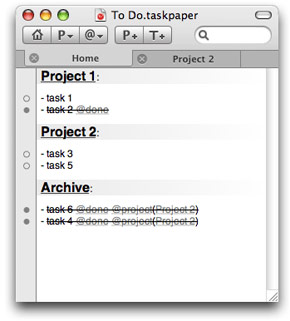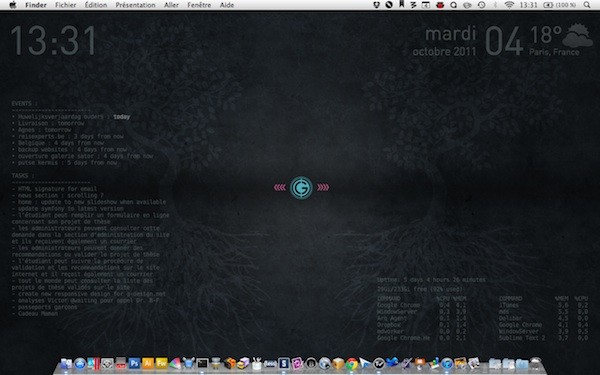

Now that I consider it, the second option isn’t that big of a deal.

#Taskpaper separate archive#
Move them to another file weekly, to keep things tidy. I’d need to open the Archive TaskPaper file.Don’t use them as projects, but Markdown headings. I can still fold the text under that header-that’s what I want.Getting messy after four days in!ĭaily work “projects” means that the Archive projects displayed in the sidebar will be extremely long if I don’t do something. When migrating some stuff to TaskPaper, I created those two projects from Things as projects in TaskPaper-which are also shown in the sidebar. This is a hold over from an idea in my previous post, “ Things: Repeating Projects!“ 1 You’ll see every tag attached to the item and the correct formatting.I’ve been using a couple of “Projects” for grouping daily work in various ticket queues: one for triaging, and the other for regular ticket smashing.
#Taskpaper separate how to#
If you’re trying to figure out how to format TaskPaper text to paste into OmniFocus, the best thing to do is create your item in OmniFocus, then copy and paste it into a text editor.

Here’s how TaskPaper reads a file:įiles are expected to use the UTF-8 encoding and use ‘\n’ to separate lines.Ī task is a line that begins with a hyphen followed by a space (‘- ‘) which can optionally be prefixed (i.e indented) with tabs or spaces. TaskPaper’s file format is fairly simple. What is TaskPaper text? Quoting from the TaskPaper Users Guide: You’ll then get TaskPaper text when pasting somewhere that only accepts plain text. On iOS, you just use the regular Copy option found in the contextual menu or Share sheet.

#Taskpaper separate mac#
In the Mac app, this is done using the Copy as TaskPaper option found in the Edit menu or contextual menu.


 0 kommentar(er)
0 kommentar(er)
